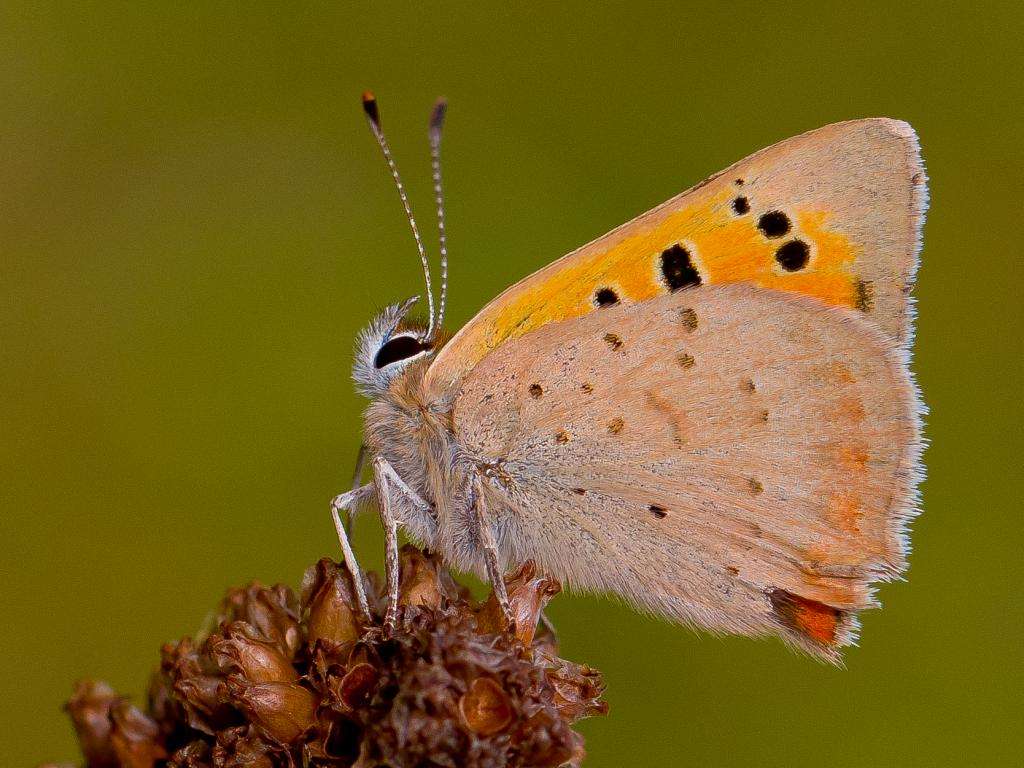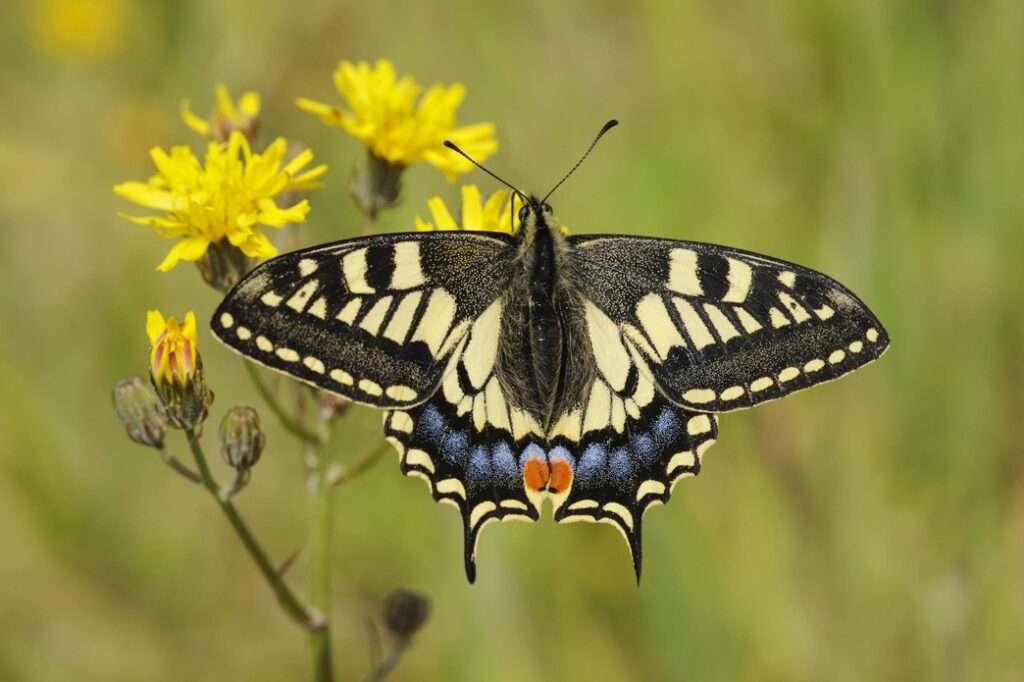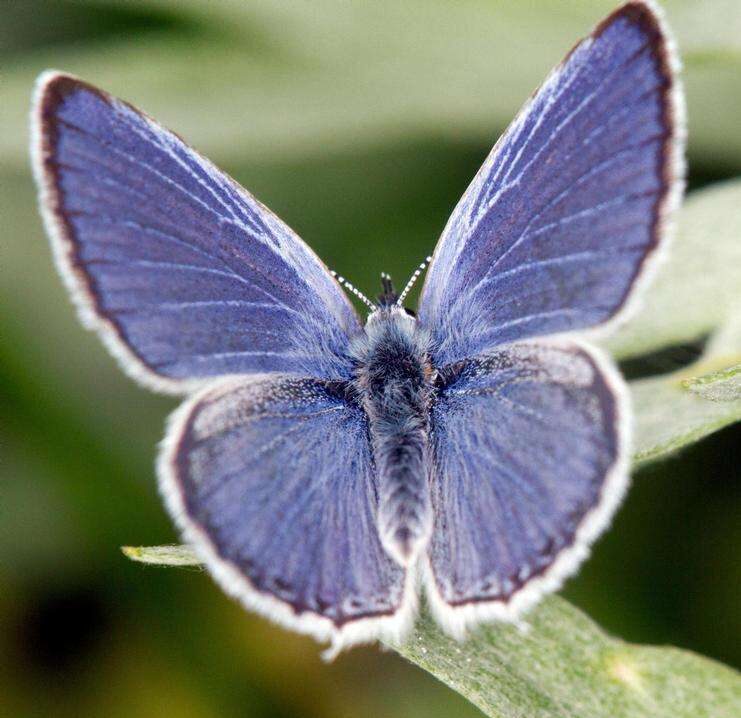
The gossamer-winged butterfly family, or Lycaenids, includes the little copper, American copper, or common copper butterfly, Lycaena phlaeas.
Amazing Facts
- Plant nectar-rich borders for butterflies, like the little copper, to feed along, as well as climbing ivy and bushes for insects that overwinter.
- Males are territorial and can be spotted waiting for females while basking on bare ground or rocks, occasionally chasing off other insects that intrude on their territory.
Appearance
One of the smallest copper species, adult American coppers with typical wing lengths of 1.5 cm for females and 1.3 cm for males (range 1.3-1.6 cm). They have grayish upper hindwings with an orange border and a row of black spots, as well as orange forewings with black spots and a dark outer wing edge. The underside of the forewing is powder white with black spots and an orange stripe, whereas the underside of the hindwing is powder orange with black spots. The red larvae have a slug-like look and might be red, light green, or yellow green in hue. They have short hairs covering them.

Diet
American copper larvae have been observed feeding on a variety of dock species, including Oxyria digyna, curly dock, sheep sorrel, and Polygonum, which is connected to R. alpestris in Europe.
Adults consume the nectar of numerous species, including common buttercups, clovers, yarrow, oxeye daisies, butterfly weed, alfalfa, blazing stars, dwarf cinquefoils, wild strawberries, and mountain mint.
Predators
Numerous insect parasitoids are butterfly predators at all life stages. The bodily fluids will be consumed first, and subsequently the internal organs will be eaten, ultimately killing the butterfly.
Other insects are the primary butterflies’ predators. Predators that feed on the larvae include praying mantises, lacewings, ladybird beetles, assassin bugs, carabid beetles, spiders, ants, and wasps (Vespidae, Pompilidae, among others). Robber flies, ambush bugs, spiders, dragonflies, ants, wasps (Vespidae and Sphecidae), and tiger beetles all consume adult butterflies. Some butterflies are reported to be caught by the sundew plant.
Many predatory vertebrates also exist, including lizards, frogs, toads, birds, mice, and other rodents.
Habitat
The majority of disturbed environments, such as fields, sand prairies, power lines, waste areas, rocky spots in the Rockies, alpine fell-fields in the Sierra Mountains, and arctic tundra, are where American coppers can be found.
Table





